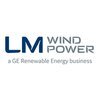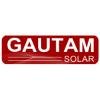Filter interviews by
GALAXY SOLAR ENERGY Interview Questions, Process, and Tips
GALAXY SOLAR ENERGY Interview Experiences
5 interviews found
I applied via Indeed and was interviewed before Feb 2023. There was 1 interview round.
(7 Questions)
- Q1. Solar SLD drawing
- Q2. What is solar how it works
- Ans.
Solar energy is the conversion of sunlight into usable electricity or heat.
Solar energy is harnessed through the use of solar panels, which contain photovoltaic cells that convert sunlight into electricity.
These cells are made up of semiconductor materials, such as silicon, that absorb photons from sunlight and release electrons, generating an electric current.
Solar energy can also be used for heating purposes through ...
- Q3. How many types of earthing are available
- Ans.
There are several types of earthing, including plate earthing, pipe earthing, rod earthing, and strip earthing.
Plate earthing involves burying a large metal plate in the ground.
Pipe earthing uses a metal pipe driven into the ground.
Rod earthing utilizes a metal rod inserted into the ground.
Strip earthing employs a metal strip buried in the ground.
Each type of earthing is used to provide a safe path for electrical curre...
- Q4. Where you used to work
- Q5. What type of inverter work you did? in solar
- Ans.
I have experience working with various types of inverters in the solar industry.
I have worked with string inverters, which convert DC power from solar panels into AC power for use in the electrical grid.
I have also worked with microinverters, which are installed on each individual solar panel and convert DC power into AC power at the panel level.
Additionally, I have experience with central inverters, which are used in ...
- Q6. How to distribute load in solar
- Ans.
Load distribution in solar refers to the allocation of power generated by solar panels to different electrical loads.
Use a solar inverter to convert DC power from solar panels into AC power for distribution.
Distribute the load by connecting electrical loads to the solar inverter's output.
Consider the power requirements and capacity of each load to ensure balanced distribution.
Implement load management techniques such a...
- Q7. Do you ever done solar installation works
Interview Preparation Tips
Marketing Interview Questions asked at other Companies
(2 Questions)
- Q1. What do you know about solar energy?
- Ans.
Solar energy is renewable energy derived from the sun's radiation, converted into electricity or heat.
Solar panels are used to capture sunlight and convert it into electricity.
Solar energy is clean and sustainable, reducing reliance on fossil fuels.
Solar power can be used for residential, commercial, and industrial purposes.
Solar energy systems can be grid-tied or off-grid, depending on the location and requirements.
So...
- Q2. What is the process of installing solar panels?
- Ans.
The process of installing solar panels involves site assessment, design, permitting, installation, and connection to the grid.
Perform a site assessment to determine the best location for solar panels based on sunlight exposure.
Design the solar panel system including the number of panels, inverters, and mounting structure.
Obtain necessary permits from local authorities before installation.
Install the solar panels on the...
Discuss the future of solar energy.
Interview Preparation Tips
Business Development Engineer Interview Questions asked at other Companies
(2 Questions)
- Q1. Solar single line diagram
- Ans.
A solar single line diagram is a visual representation of a solar power system showing how components are connected.
Shows how solar panels, inverters, batteries, and other components are connected in a solar power system
Helps in understanding the flow of electricity and identifying potential issues
Used for planning, designing, and troubleshooting solar power systems
- Q2. How many types of solar systems are here
- Ans.
There are mainly three types of solar systems: grid-tied, off-grid, and hybrid systems.
Grid-tied solar systems are connected to the local utility grid and do not require batteries for energy storage.
Off-grid solar systems operate independently from the grid and rely on batteries to store excess energy for use when the sun is not shining.
Hybrid solar systems combine the features of both grid-tied and off-grid systems, a
Interview Preparation Tips
They’re offering single penny and ask you to all the jobs like they will ask you to drive they’ll ask you to do maid work
They’ll ask you to visit client even if you are engineer.😂 They ask electrical engineer to do marketing.. very poor experience
Marketing Executive Interview Questions asked at other Companies
I applied via Naukri.com and was interviewed in May 2024. There was 1 interview round.
(1 Question)
- Q1. Types of inverter
- Ans.
Types of inverters include grid-tie inverters, off-grid inverters, and hybrid inverters.
Grid-tie inverters are used in systems connected to the utility grid.
Off-grid inverters are used in standalone systems not connected to the grid.
Hybrid inverters can operate in both grid-tie and off-grid modes.
Other types include microinverters and string inverters.
Interview Preparation Tips
Service Engineer Interview Questions asked at other Companies
GALAXY SOLAR ENERGY interview questions for popular designations

(1 Question)
- Q1. Asking about my technical knowledge.
(2 Questions)
- Q1. Whare did you work before?
- Ans.
I worked at XYZ Company as an Installation Engineer.
Worked at XYZ Company as an Installation Engineer
Responsible for installing and configuring various systems
Collaborated with clients to understand their requirements and provide technical support
Ensured proper functioning of installed systems through testing and troubleshooting
Provided training and guidance to clients on system usage
- Q2. What is your Salary expectation?
- Ans.
My salary expectation is based on my experience, qualifications, and the responsibilities of the role.
Consider the industry standards and average salaries for Installation Engineers
Take into account your level of experience and qualifications
Factor in the responsibilities and demands of the specific role
Research the company's salary range or inquire about their budget
Be open to negotiation and discuss benefits and perk
Installation Engineer Interview Questions asked at other Companies
Top trending discussions






Interview questions from similar companies

Senior Engineer Interview Questions & Answers
CleanMax Enviro Energy Solutionsposted on 14 Oct 2021
Interview Questionnaire
1 Question
- Q1. Technical questions, safety.
Interview Preparation Tips

I applied via LinkedIn and was interviewed before Nov 2020. There were 3 interview rounds.
Interview Questionnaire
3 Questions
- Q1. Your professional years ,field in which I had experience?
- Q2. Are you ready to take the challenge
- Q3. Core expertise & challenges faced till date ?
Interview Preparation Tips

(1 Question)
- Q1. Power bi, sap, automation, dashboard development
(1 Question)
- Q1. Hr questions...general information related to project. Tools and skills etc
Interview Preparation Tips

I appeared for an interview in Apr 2024.
(2 Questions)
- Q1. About work culture
- Q2. About technical
(1 Question)
- Q1. Related to Transformer

I appeared for an interview in Jul 2024.
(10 Questions)
- Q1. Can you tell me about yourself?
- Q2. What are your responsibilities in the plant?
- Ans.
As a Senior Engineer in the plant, my responsibilities include overseeing operations, managing projects, ensuring compliance with regulations, and leading a team of engineers.
Overseeing day-to-day operations in the plant
Managing projects related to plant upgrades or expansions
Ensuring compliance with safety and environmental regulations
Leading and mentoring a team of engineers
Troubleshooting technical issues and implem
- Q3. Why is tan delta testing conducted in power transformers?
- Ans.
Tan delta testing is conducted in power transformers to assess the insulation condition and detect any potential faults.
Tan delta testing helps in evaluating the insulation quality of power transformers.
It can detect any potential issues such as moisture, contamination, or aging of insulation materials.
By measuring the tan delta value, engineers can assess the dielectric losses in the transformer.
Regular tan delta test...
- Q4. What is a vector group?
- Ans.
A vector group is a method used to represent the phase relationship between the primary and secondary windings of a transformer.
Vector group indicates the connection of transformer windings and the phase shift between them.
It is represented by a combination of letters and numbers, such as Yd1, Dyn11, etc.
Different vector groups have different phase relationships, affecting the transformer's performance and operation.
Ve...
- Q5. What should be considered when erecting an IDT (Inverter duty Transformer)?
- Ans.
Considerations when erecting an IDT (Inverter duty Transformer)
Ensure the transformer is designed for inverter duty applications
Properly size the transformer based on the inverter's output power
Consider the harmonic content of the inverter's output when selecting the transformer
Provide adequate ventilation and cooling for the transformer to handle the increased heat generated by the inverter
Ensure proper grounding and ...
- Q6. What is the star-delta connection in power transformers?
- Ans.
Star-delta connection is a method used in power transformers to reduce starting current and improve efficiency.
Star-delta connection involves connecting the primary windings of the transformer in a star configuration during starting, and then switching to a delta configuration during normal operation.
This method helps in reducing the starting current drawn by the transformer, which is beneficial for the power system.
It...
- Q7. What types of conductors are used in high-tension (HT) lines, and what are their current capacities?
- Ans.
High-tension (HT) lines use different types of conductors with varying current capacities.
Types of conductors used in HT lines include aluminum, steel, and composite materials
Aluminum conductors are commonly used due to their lightweight and high conductivity
Steel conductors are used for their strength and durability
Composite conductors are a newer technology that offer a balance of strength and conductivity
Current cap...
- Q8. What is the distance between poles in 33KV high tension lines?
- Ans.
The distance between poles in 33KV high tension lines is typically around 50-60 meters.
The distance between poles in high tension lines is determined by factors such as terrain, voltage level, and local regulations.
In general, the distance can range from 50 to 60 meters for 33KV high tension lines.
This distance is important to ensure proper support and insulation of the conductors between poles.
- Q9. What is the process of laying LT cables?
- Ans.
The process of laying LT cables involves planning, trenching, laying the cables, jointing, testing, and backfilling.
Plan the route and depth of the trench for laying the cables.
Excavate the trench to the required depth and width.
Lay the cables in the trench, ensuring proper alignment and support.
Joint the cables together using appropriate connectors.
Test the cables for continuity and insulation resistance.
Backfill the ...
- Q10. What is the process for attaching modules?
- Ans.
The process for attaching modules involves identifying connection points, aligning the modules, securing them in place, and testing for functionality.
Identify connection points on both modules
Align the modules properly to ensure a secure fit
Secure the modules in place using appropriate fasteners or connectors
Test the functionality of the attached modules to ensure proper connection
(2 Questions)
- Q1. Why do you want to change jobs?
- Ans.
Seeking new challenges and opportunities for growth in a more innovative environment.
Desire for new challenges and opportunities
Seeking growth and advancement
Looking for a more innovative work environment
- Q2. What can you share about your family?
- Ans.
I come from a close-knit family of four, including my parents and younger sister.
My parents have always been supportive of my career choices and encouraged me to pursue my passion for engineering.
I have a younger sister who is currently studying computer science at university, following in my footsteps.
We enjoy spending quality time together, whether it's going on family vacations or simply having dinner at home.
GALAXY SOLAR ENERGY Interview FAQs
Tell us how to improve this page.
GALAXY SOLAR ENERGY Interviews By Designations
Interview Questions for Popular Designations
GALAXY SOLAR ENERGY Interview Process
based on 7 interviews
Interview experience
Interview Questions from Similar Companies
GALAXY SOLAR ENERGY Reviews and Ratings
based on 40 reviews
Rating in categories
|
Site Engineer
11
salaries
| ₹2 L/yr - ₹3 L/yr |
|
Technical Marketing Engineer
6
salaries
| ₹1.6 L/yr - ₹6.7 L/yr |
|
Electrical Site Engineer
6
salaries
| ₹2.8 L/yr - ₹3.1 L/yr |
|
Project Engineer
5
salaries
| ₹2.4 L/yr - ₹3.4 L/yr |
|
Service Engineer
5
salaries
| ₹1.3 L/yr - ₹3.2 L/yr |

UTL Solar

Danfoss Power Solutions

LM Wind Power

Senvion
- Home >
- Interviews >
- GALAXY SOLAR ENERGY Interview Questions








